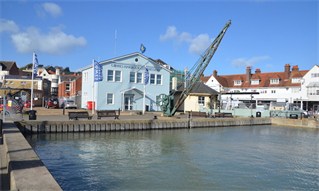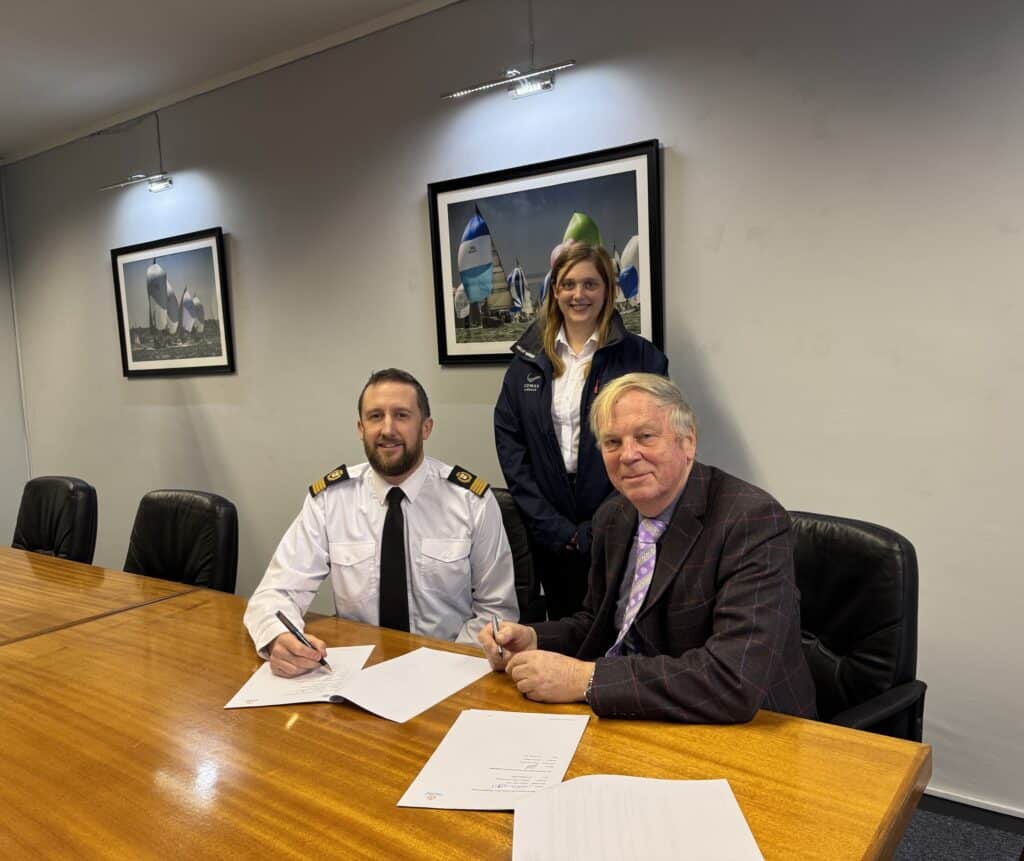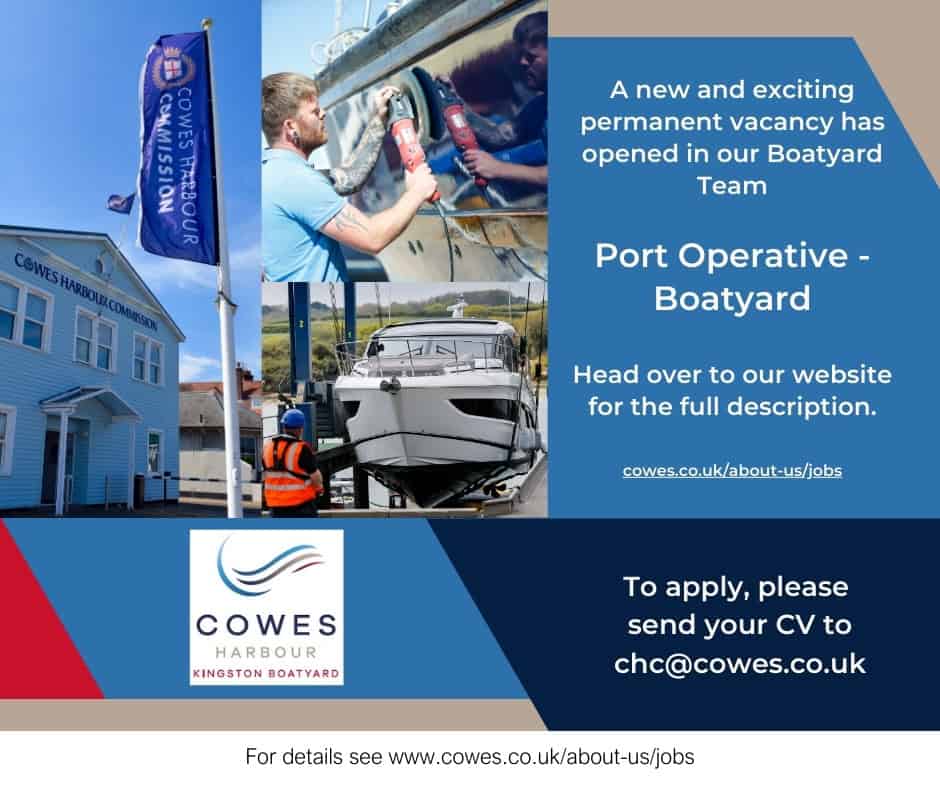
In the Cowes Harbour Commission (CHC) E-newsletter of 4th July, we published results of the June 2015 formal review of the Cowes Breakwater Project and CHC’s decision, supported by the Harbour Advisory Committee, to proceed with the 2015 breakwater construction. The Commission is also committed to providing the background information and advice that formed the basis for this important decision, as CHC believes it is important to ensure transparency and accountability towards our stakeholders and all harbour users. The background to the Commissioners’ decision is explained here and the report from CHC’s hydrodynamic consultants ABPmer will be published on receipt next week on the CHC website.
CHC’s project review looked at changes to harbour tidal flows and potential changes to sedimentation following the 2014 construction of the breakwater gravel core. The review took into consideration costs of any project delay and potential wider impacts to the East Cowes regeneration project. Information and advice from CHC’s consultants was considered in detail to determine if there was reasonable evidence to warrant a decision to delay the next stage of adding the rock armour to the breakwater structure.
The key information and advice upon which Commissioners based their review decision was informed by a presentation from ABPmer and a special June 2015 sedimentation report, supplemented by analysis of the last decade of bathymetric and annual sedimentation budget computations and some limited post-breakwater bathymetric surveys and sediment budget computations. In addition, ABPmer’s existing tidal model was used with updated tidal data to compare pre and post-breakwater scenarios to provide supporting evidence.
The CHC Board of Commissioners takes stakeholders’ concerns about the Breakwater Project extremely seriously. CHC continues to look at every possible course of action to develop understanding of the causes of the tidal flow changes and apparent increased sedimentation in Cowes Harbour. The Commission will continue to pursue all avenues and will investigate potential design optimisation and mitigation measures for the next phases of harbour infrastructure, the Shrape breakwater extension and dredging of the new Eastern Channel.
Tidal regime in Cowes Harbour
Cowes is located at the centre of the Solent, a complex area for tides. The tidal stream at the entrance to Cowes Outer Harbour in the vicinity of the Prince Consort buoy changes from an easterly to a westerly direction approximately 1.5 hours before high water Portsmouth. During the westerly flows around high water, and before breakwater construction, there was already a cross-fairway tidal flow. The effect of the new breakwater has been to concentrate flows into and out of the harbour through the western and eastern entrances. Cross flows between No. 1 buoy and the Island Sailing Club (ISC) are reduced, but cross flows between the ISC and Red Jet terminal have increased. The existing cross-harbour tidal flow has in effect moved south. The strength of tidal flows is currently enhanced due to the tidal cycle being at the top end of the 19-year lunar nodal cycle.
After review of the tidal changes, advice from ABPmer, consultation with harbour users and the introduction of safety control measures, CHC considers the new tidal flows are manageable. However, CHC will use the new tidal model, currently under construction by ABPmer, to best optimise and mitigate the tidal flows in the next phases of harbour infrastructure already included as part of the wider harbour protection plan, the Shrape breakwater extension and Eastern Channel dredge.
Sedimentation in Cowes Harbour
Whether or not the breakwater is one of the causes, increased sedimentation is a major concern and priority for CHC. The recent full harbour bathymetric survey and ABPmer sediment report has confirmed that the annual sedimentation rate for the last two years in Cowes Harbour north of the Chain Ferry is at a significantly higher level than recorded in the last 10 year period reviewed. The review of annual sedimentation rates in Cowes Harbour has, however, highlighted large annual variations with no regular patterns or trends.
Following a survey and review of the gravel mound, the breakwater is not likely to be a source of sediment and the installation of the rock armour will only reduce any such likelihood. Local short-term changes in the estuary are expected as a result of the new breakwater (or indeed from any new marine structure or dredging), but these should stabilise in time.
Sedimentation sources and drivers include local, Solent and south coast environmental changes, as well as natural and man-made interventions. There are also possible regional and longer lasting trends in suspended sediment concentrations across the Solent. Importantly, the long shore current that originates from east of Old Castle Point often shows a visible sediment plume curving around the end of the Shrape breakwater; this feature was present pre-breakwater construction. Sediment concentrations may however, have altered due to changes either in the Solent or locally. There have also been a number of observations and reports of increased levels of sedimentation and turbidity in the Solent and adjacent south coast waters during the last two years.
The ABPmer report and consultants conclude that the breakwater is unlikely to be the main cause of the apparent increase in sedimentation levels.
CHC understands and shares the concerns of stakeholders in respect to the apparent increase in sedimentation rates. CHC is therefore committed to continue to improve its understanding of the cause or causes for these apparent changes to the sedimentation regime in the Solent and Cowes Harbour. This commitment includes continuing to source and use the best available information, data, modelling and importantly evidence to support the findings and conclusions of CHC’s professional advisers.
If in the longer term sedimentation or tidal flows are considered unfavourable as a result of Solent and/or local changes, then the new model will enable proper evaluation of any future proposed design optimisation or mitigation schemes.
Postponement risks
Contractors Boskalis Westminster have estimated a direct cost of £700,000 for a three month delay to the start of the 2015 breakwater works until completion of the new tidal model.
The Homes and Communities Agency (HCA), has an agreement with their partners for the East Cowes development that includes a requirement for their developer to fund the costs of the Shrape breakwater extension and Eastern Channel dredge. A delay to the 2015 breakwater construction programme could have serious implications to the successful completion of the East Cowes regeneration contract agreements and programme and a half completed project would allow only limited mitigation options to be considered.
CHC decision
The Commission was contractually required to make this important decision to proceed or delay before the scheduled July start of 2015 breakwater construction. CHC undertook detailed consideration of all issues and advice received from ABPmer and project managers Atkins. In addition, after consulting other stakeholders through the Harbour Advisory Committee, whose view was not to delay breakwater completion, the Commissioners unanimously agreed there was insufficient evidence to warrant a decision to delay the scheduled addition of the rock armour in 2015.
Way forward for Cowes Harbour
CHC will prioritise completion of the new tidal model and continue to review all data with our consultants to improve understanding of the apparent increase in the harbour sedimentation. CHC will continue to consult and involve the Advisory Committee and engage with all stakeholders. CHC is committed to carrying out another project review before any decisions are made on the next phases of harbour infrastructure. In addition, CHC will look at options for methods of dredging and the development of a harbour maintenance dredging protocol.
Local Notices to Mariners will be issued on the 2015 breakwater construction works and published on the CHC website.
Supplementary information:
• Cowes Breakwater Project Review Report – July 2015 – Executive Summary



